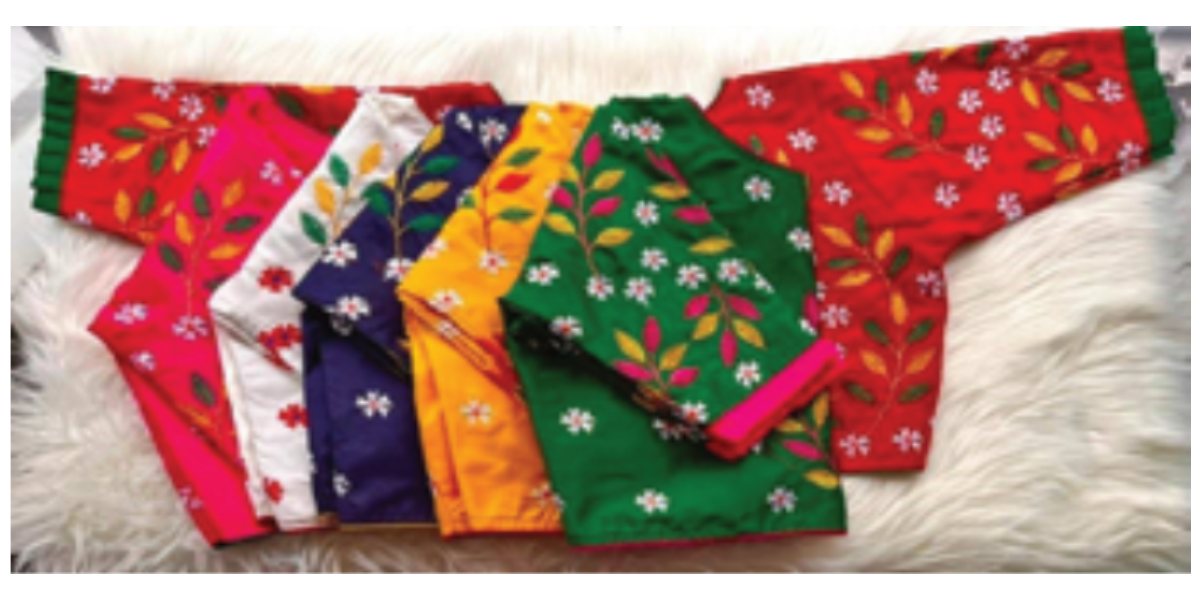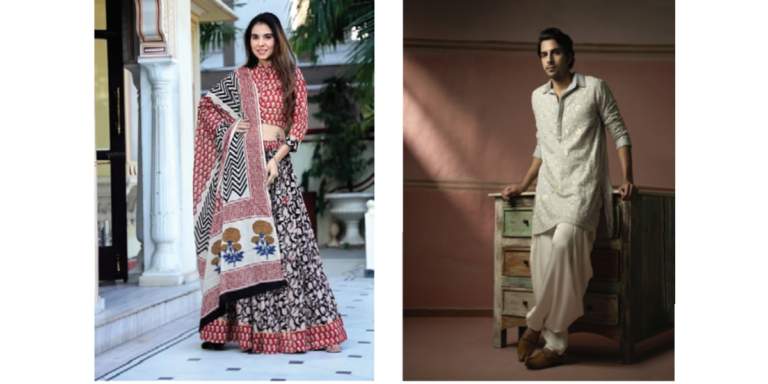While on the one hand the discussions have been centering on the challenges faced by the handloom industry and the remedies to overcome, there has been a welcome rejuvenation. Ruchi Verma finds that consumers across the world are now evincing greater interest in handloom textiles for reasons relating to sustainability and cultural relevance. Handloom fashion is making an impact worldwide and how for fusion of style, comfort, durability, and sustainability!
In recent times, there has been a resurgence of interest in handloom textiles around the globe. Consumers are increasingly looking for sustainable and culturally relevant clothing options, prompting designers and brands worldwide to integrate these traditional crafts into their collections.
Handloom fashion offers an exciting fusion of style, comfort, durability, and sustainability — making it appealing to customers concerned about preserving cultural heritage while embracing environmentally responsible consumption habits.
The journey of handloom textiles is long and interesting, originating thousands of years ago, dating back to ancient civilisations such as Mesopotamia, Egypt, India, Greece, Rome, China, Persia, Japan, Mexico, Indonesia, Turkey, and Africa.
These early societies developed weaving techniques that not only met practical needs but also served as expressions of cultural and religious significance. Initially, handloom textiles were used primarily for religious purposes, adorning temples, altars, and figures of deities, and they were often reserved for royalty and elite members of society. This exclusivity underscored the textiles’ value and the high level of craftsmanship required to produce them.
Over the millennia, handloom cloth evolved and became integral to everyday life for ordinary citizens. This transformation was driven by the increasing accessibility of materials and the dissemination of weaving knowledge. As a result, handloom fabrics began to be used in daily attire, household items, and communal activities. They became symbols of cultural identity and social status, reflecting the unique traditions and artistry of each community.
Reflecting artistry
Today, handloom weaving employs millions of people worldwide, preserving centuries-old techniques and allowing artisans to showcase their exceptional craftsmanship capabilities. In many regions, weaving remains a family tradition passed down through generations, with each weaver contributing to the preservation and evolution of their cultural heritage. These artisans use traditional methods to create fabrics that are not only beautiful but also durable and sustainable.
Each region produces fabrics imbued with distinctive patterns, colours, and materials that reflect regional identities, histories, climates, and cultures. For instance, the vibrant Kente cloth of Ghana is celebrated for its bold patterns and is worn during important cultural ceremonies.
The delicate weaves of Japanese kimonos, the Nishijin-ori silk weaving in Kyoto, the intricate ikat patterns of Southeast Asia, the opulent brocades of India’s Banarasi silk, and the robust woollen textiles of the Andean regions of South America all highlight the diverse applications and aesthetic sensibilities of handloom textiles around the world.
Contemporary fashion
As per reports, the global handloom textile market size will reach USD 12 billion by 2025, expanding at a compound annual growth rate of 4.8 per cent. Growing consumer preference for organic, ethically sourced, and sustainably manufactured clothes drives this upward trend. Moreover, young designers worldwide recognise handloom fabrics’ aesthetic appeal and inherent charm, integrating them seamlessly into modern apparel designs catering to varying tastes and lifestyles.
The handloom product market on the other hand is projected to be valued at USD 8,190 million in 2024 and is expected to rise to USD 18,179 million by 2034. The global handloom product market is expected to evolve at a CAGR of 8.30 per cent during the forecast period.
Luxury brands such as Versace, Roberto Cavalli, Prada, Gucci, Louis Vuitton, Chanel, Ralph Lauren, and Burberry are increasingly incorporating traditional handloom elements into their collections. For instance, Gucci’s incorporation of traditional Ikat patterns in their high fashion pieces reflects a fusion of modern aesthetics with traditional craftsmanship.
Additionally, emerging designers introduce new interpretations of classic handloom styles, breathing fresh life into traditional crafts while connecting with consumers interested in exploring uncharted territories within fashion. A prime example is the innovative work of Indian designer Gaurang Shah, who revitalises ancient weaving techniques to create contemporary fashion statements.
India stands out as a hub for handloom textiles, producing approximately 120 million meters of fabric per year. Among all Asian countries, India accounts for 60 per cent of handloom production. Its rich cultural heritage makes Indian handloom fabrics incredibly attractive to designers seeking inspiration for innovative clothing lines.
Local going global
Ethnic wear, such as saree, salwar kameez, lehenga, sherwani, dupatta, shawl, remain favourite choices, particularly for Indian weddings. However, Indian handloom manufacturers are now branching out into western wear categories, including dresses, skirts, blouses, jackets, trousers, and accessories like bags and belts. By incorporating intricate embroideries, vibrant prints, delicate laces, and luxurious silks, designers offer modern interpretations of traditional Indian attire, attracting Western audiences seeking sustainable and authentic ethnic fashion statements.
Indian handloom producers collaborate with international designers to bridge cultural gaps and further mutual understanding through creative exchange, leading to increased export sales of handloom products. The collaboration between Indian weavers and international designers highlights how traditional Indian textiles can be reimagined to appeal to global fashion markets.
International markets provide lucrative opportunities for handloom a

rtisans to expand their customer base, diversify product offerings, obtain better pricing, and improve manufacturing processes. Handloom products are widely available on online platforms such as Amazon Handmade, Etsy, Alibaba, and eBay, enabling smaller producers to compete with larger corporations and attract global buyers.
This access extends beyond just retail transactions and allows artisans to establish partnerships with designers and brands willing to promote their creations on a broader scale. Consequently, handloom weaving gains visibility and credibility, resulting in increased profit margins and job opportunities.
On the downside, however, international markets present challenges such as unfair competition from mass-produced goods, loss of authenticity due to commercialisation, exploitation of labour, copyright infringements, lack of protective laws, and vulnerability to currency fluctuations. Artisans must navigate these complexities carefully while safeguarding their intellectual property rights and retaining cultural integrity.
Strategic collaborations
Global brands interested in adopting handloom fabrics into their collections can benefit greatly by forming strategic partnerships with local craftsmen. Building mutually beneficial collaborations facilitates ongoing communication, constructive feedback, continuous improvement, and revenue sharing mechanisms.
Partnerships based on trust, mutual respect, transparency, and accountability can unlock tremendous potential for shared growth and prosperity. Working together allows local artisans to develop specialised skills, experiment with novel designs, diversify their portfolios, secure bigger orders, utilise improved technologies and machinery, and increase competitiveness in international markets.
Addressing environmental concerns arising from handloom production becomes increasingly important in light of rising global consciousness surrounding climate change mitigation and resource conservation. Handloom production relies heavily on manual labour, necessitating minimal use of electricity and fuel compared to machine-based operations. Most traditional practices are sustainable and environment-friendly.
The rise of e-commerce has also been pivotal in bringing Indian handloom to a global audience. Online platforms have enabled artisans and small-scale producers to reach customers worldwide without the need for intermediaries. Social media and digital marketing have further amplified their reach, allowing artisans to tell their stories and showcase their products to an international audience. These digital tools have democratised access to global markets, enabling even the smallest artisans to gain visibility and recognition.
People around the world can play a pivotal role in supporting traditional handloom communities by purchasing handmade products from local vendors, attending craft fairs, visiting museums exhibiting handloom works, writing reviews on review websites, spreading awareness on social media platforms, engaging in conversations about handloom craftsmanship, donating funds to charitable organisations supporting artisans, and advocating for policies conducive to preserving traditional craft knowledge and skills.

